I attended a 4-hour breadmaking class in Culver City led by Rose Lawrence of Red Bread where we all learned how to make an artisan wild-yeast French Country Loaf. Baking bread is a complicated but satisfying process. When done right, it takes hours to make. Read the tips below this recipe to get the most out of baking your bread.
Enjoy this recipe:
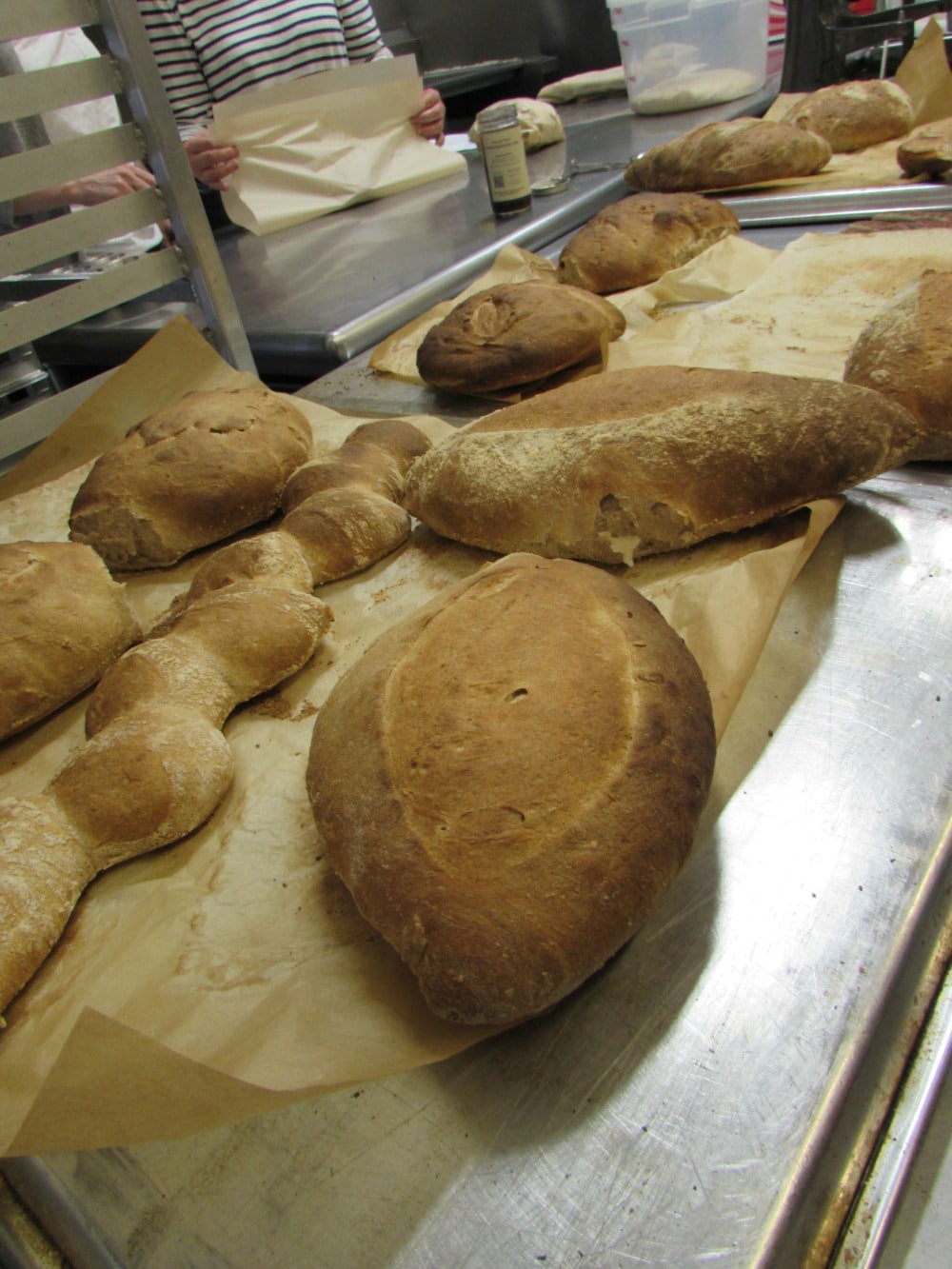
Wild Yeast French Country Loaf
Ingredients
- 300 g Culture obtain some or start your own
- 312 g water
- 350 g Bread Flour has the internal kernel of wheat removed from the husk that has a consistent protein content of 12-14%
- 100 g Whole-wheat flour
- 17 g Celtic salt
Instructions
- Measure out culture.
- Add water and stir well with fingers.
- Let it rest 30 mins
- Combine the 2 flours.
- Sprinkle in the flour into the culture mixture reserving one cup to adjust for variances in temperature.
- Let it rest for 30 mins.
- Add salt
- Put the dough on a flour powdered surface and slap it one time. (this will let you know if it is too sticky. If it is sprinkled in a little more flour)
- Stretch and fold the dough until it resists. (approx 8 times with quarter turns)
- Let it rest for 30 mins.
- Repeat 3 times (stretch and fold the dough 8 times with quarter turns and let it rest 30 minutes)
- On the 3rd time allow the dough to proof 2 hours at room temperature.
- Move to the refrigerator for an overnight rise. (can be kept for 3 days before baking)
- When ready to bake, divide the dough into 2 portions for 1 lb 5 oz batards or one 3 lb boule.
- Flatten into an oval and shape, pinching seams well.
- If using pizza stones place the loaves on a “slip” – you can use a cookie sheet dusted with flour. (this makes it easier to let them “slip” onto the pizza stone.)
- Proof for 1 hour at room temperature.
- Preheat the oven to 500.
- Slash to create a design on top of the bread (straight line, cross, or star with scissors)
- Place in oven and bake for 30 min for batard (long and narrow) 1 hour for large boule (round) or until golden brown.
- To test, turn the loaf over and tap lightly. It should sound hollow.
- Remove from the oven and place on wire racks to cool.
- Allow 30 minutes to cool completely before cutting it.
All of the proceeds from our breadmaking workshop went to benefit Food Forward, a non-profit organization that rescues local produce from going to waste and distributes it to people in need. They gather at local residences, public spaces, farmer’s markets, and wholesale food establishments to collect excess fruits and vegetables and then give them to local agencies to feed the hungry.
Why bread made with wild yeast is good for you
Bread has been given a bad rap in the last decade to the point that many see it as almost evil. Everyone is on the bandwagon to go gluten-free and rightly so. Our flour in the US has been so bastardized that it’s causing mass cases of gluten intolerance. We’re told, “bread will make you sick.” “Bread will make you fat.” “Stop eating bread.”
My bread consumption was down to almost zero until I went to Europe. While I was there, I ate all the bread I wanted without feeling the least bit bloated. In many European countries, bakers pride themselves on their bread-making traditions. Bread is made using wild yeast starters instead of relying on commercially produced yeast. Some bakeries have starters that go back multiple decades and they use them to bake fresh and delicious loaves every day.
Unfortunately, the use of commercial yeast is beginning to sneak into European bread-making practices as well because American technology is considered to be “sexy.” Europeans haven’t yet seen the results of using commercial yeast or employing American bread-making techniques. However, the incidences of gluten intolerance are significantly lower in Europe than it is in America. Let’s hope that Europeans realize this and stick to their traditions.
At our bread-making class, we baked what I like to call “real bread.” Bread has always been considered to be “the staff of life.” I’m sure you’ve heard of people subsisting on “bread and water.” If you were lost in a forest and only had Wonder Bread to eat, you wouldn’t last long but you would survive and stay healthy eating “real bread.” It’s high in protein and fiber that’s necessary to sustain life.
Bread Facts Learned in Our Breadmaking Workshop
- A good bread recipe doesn’t need sugar. When sugar is added to bread dough it will start to develop green powdery mold. But bread dough made without sugar will stay fresh and wrapped up in a dishtowel for about 2 weeks.
- Leave your starter container loosely covered when bringing it to room temperature. If it’s sealed you may have an explosion. You can store it with a tightened lid in the refrigerator because the temperature slows down the fermenting process.
- Keep about 2 quarts of starter on hand at a time.
- If you see a gray layer in your starter, it’s hooch (Moonshine) pour it off, and don’t drink it.
- Rye bread has the lowest amount of gluten.
- All flours contain wild yeast. A starter is a mixture of flour and water that is allowed to ferment and come alive. You have to keep feeding it with more flour and water to maintain it.
Red Bread
Rose Lawrence and her husband David started their business, Red Bread in 2012 to “bring whole, natural and artisanal food to the Westside of Los Angeles.” They set up at local Farmer’s markets, had a pop-up restaurant on Washington Blvd, and have a bakery in West LA. They have partnered with LA-based food organizations to provide lunch and dinner pop-ups.
Making Bread
Our breadmaking class was held at Platine Cookies, in Culver City. Each participant (7 ladies in total) received a jar of starter to bring home.
Equipment needed to make bread
A food scale – place a bowl on top of your food scale, set the TARE to zero, and add the ingredients in grams. If you follow the exact measurements, your result will be delicious although quantities will depend on room temperature and other factors.
Equipment and tips for making bread
Pizza stones – Rose recommends having two. One should sit at the bottom of your oven and the other is used to bake your bread. This helps the bread bake more evenly. You can also use an upside-down cookie sheet lined with parchment paper if you don’t have a stone. Put a muffin tin filled with water on a top rack in the oven to provide moisture or spray the oven with a mist of water before baking.
There are two kinds of bread scrapers, bowl (flexible) and bench. (hard) You can use these to scrape flour out of the bowl or off the table or to help shape the bread.
I always thought you had to have strong muscles to knead the dough, but you don’t. Each turn can be completed in about 8 “kneads.” First, flatten the bread into an oval shape with your hands. With your palm, pull a side of the dough and fold it over. Take a quarter turn and repeat for 8 turns total. (twice around)
A person with cool hands will have less trouble with stickiness when kneading. If you tend to run hot, as many menopausal women do, put your hands in the freezer for a few minutes before working with your bread.
The best way to clean your hands, when working with bread dough, is to rub a little dry flour on them over a trash can. This removes most of the grit so you won’t clog your pipes.
Start with your starter
To make the bread recipe at the top of this post you will need to obtain some starter culture. You can do this by purchasing it, getting some from someone who has some, or by creating your own. Some starter recipes call for a lemon peel or other fruit but Rose doesn’t recommend this as it turns to sugar and will cause your bread to mold.
Using high-quality flour like King Arthur because it’s important for making great bread. If you want to try breadmaking yourself, Rose recommends trying local organic flours available in your area. Grist and Toll in Pasadena, California, near where I live has their own mill and hand grinds their flour.
Bread shapes
For reference in the recipe below see the difference between the shape of a batard and a boule.
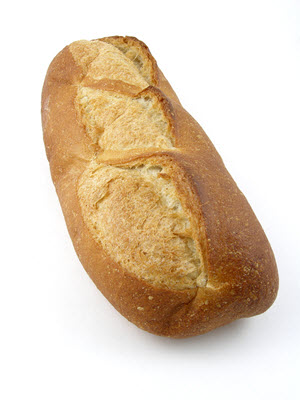
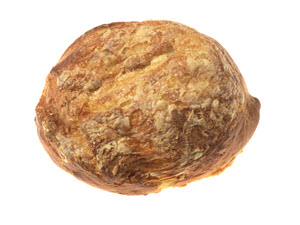
The process of breadmaking is relaxing and it makes your house smell wonderful.
Have you tried breadmaking yet? Please leave a comment below.


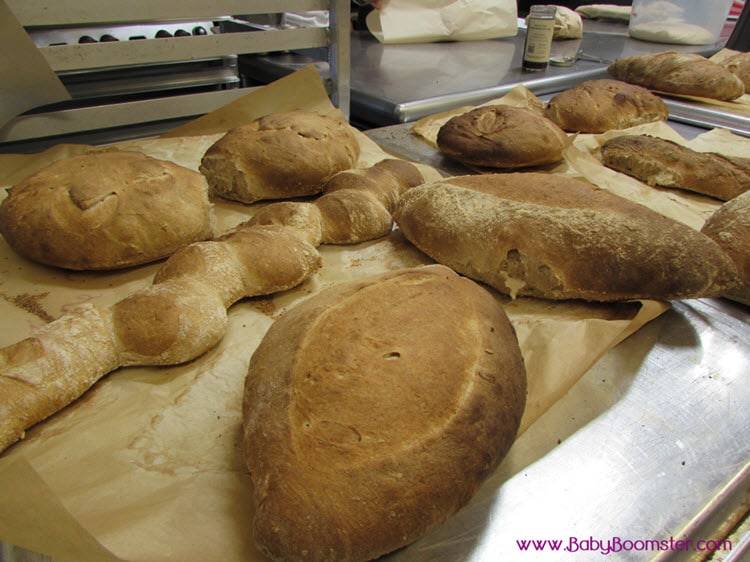
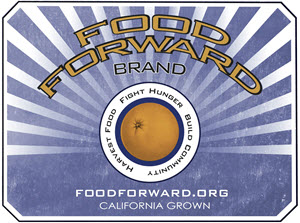
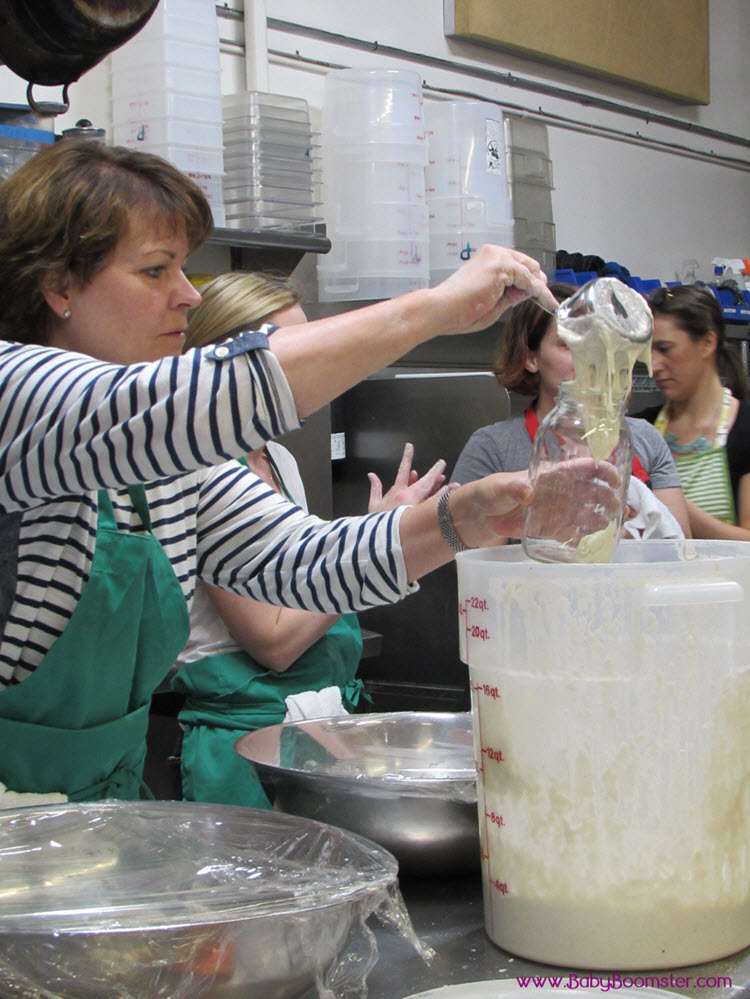
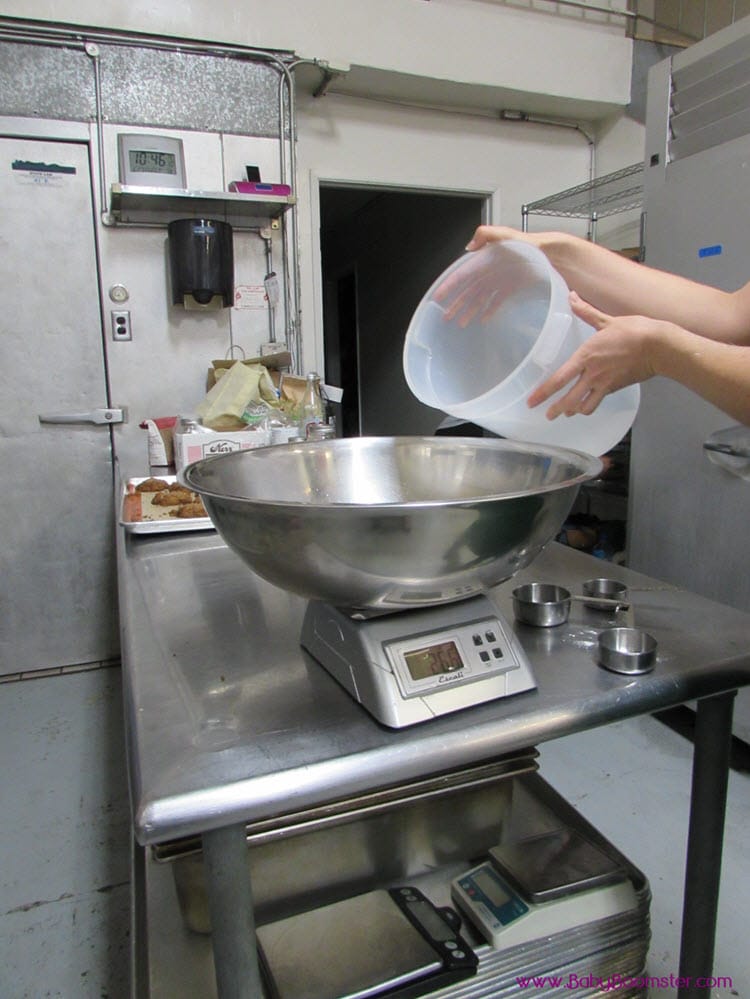
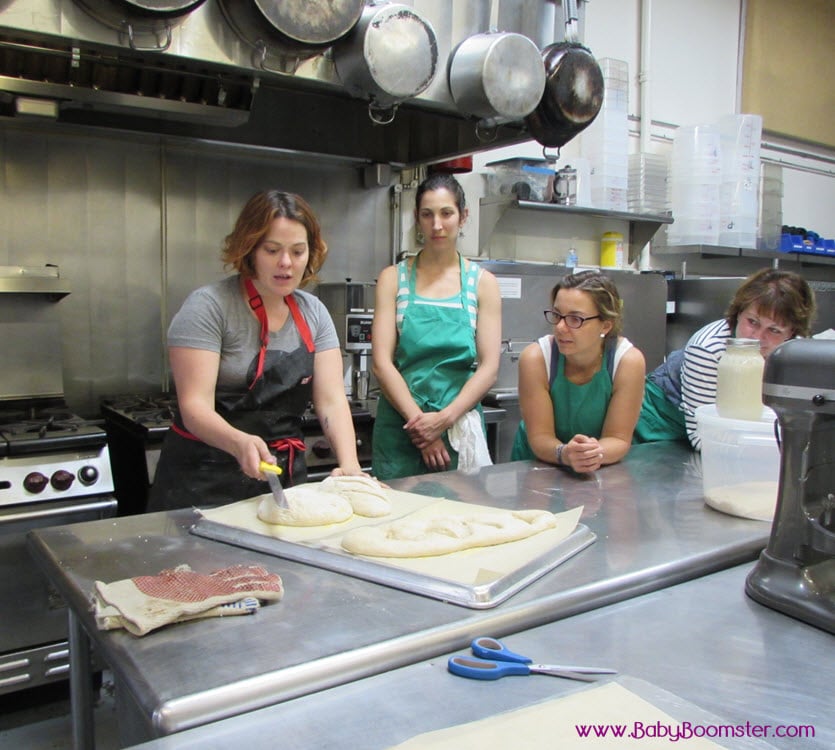
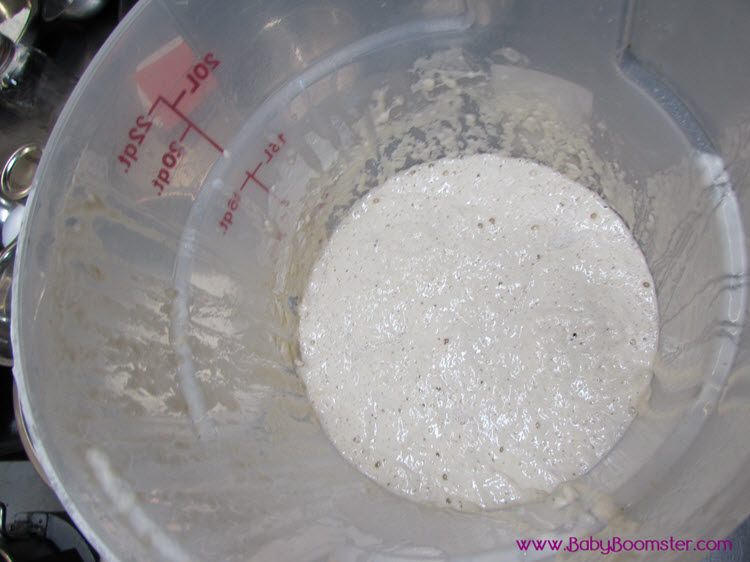


There is nothing – NOTHING! – quite like “real” bread. We used to live across the street from a bakery that made exactly that, and I so miss being able to walk across the street for a fresh loaf. I’ve always been a little scared to try making it myself, but your post is inspiring me to do so! Thank you for sharing!
Hi Laurel,
It really makes a difference when it’s freshly baked and you have control over what’s in it. Once I found out it wouldn’t make me sweat I’m inspired to keep making it.
Rebecca
I can almost smell the comforting aroma of fresh baked bread form your post! Last year I worked for a bakery helping them with their marketing and sales. Although the job was a bit fun the best part was the freshly baked bread I could take home.
Hi Haralee,
I can imagine how nice that must have been and to be able to take home fresh bread at the end of the day must have been wonderful.
Rebecca
Oh my gosh Laurel! How much fun was that taking that class? I wish we had those types of classes around where I live but no such luck. This is the best post I’ve ever seen on everything you wanted to know about bread! And I’m on this low carb thing now which is all the more reason I am drooling over it. I think you are right about eating bread though. It’s got such a bad rap doesn’t it. Just love this post…love it!
Hi Carolann,
I’m so glad you liked it. I didn’t know about the classes myself until Food Forward contacted me. You never know, there may be classes in your area you don’t know about. They’re so much fun. If you get the urge for bread, go for rye or sourdough at a bakery that doesn’t use sugar in their recipe and makes great whole grain bread using a starter. Don’t eat the store bought kind.
Rebecca
Oh thanks Rebecca! that’s good to hope for. And yes, you are so right – the store bought kind is so very nasty lol. I will have to check out Food Forward for sure. Have a wonderful evening!